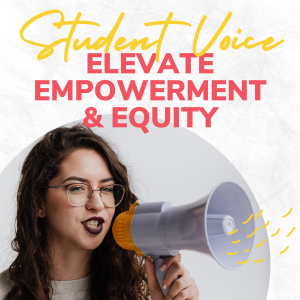[vc_row][vc_column][vc_column_text]In 2013, the school board in Philadelphia announced a plan to close 37 schools. The Philadelphia Student Union, an organized group of students that runs campaigns at the local, state, and national levels, showed up to the school board meeting dressed as zombies. They performed a choreographed routine to Michael Jackson’s Thriller and collapsed at the end. One of the participating students, Benjamin Franklin High sophomore Hausim Talbot, told the Philadelphia Inquirer, “We represent the students affected by the closing plan. Our hopes would be dead.”[/vc_column_text][/vc_column][/vc_row][vc_row][vc_column][vc_column_text][/vc_column_text][vc_row_inner][vc_column_inner][vc_video link=”https://www.youtube.com/watch?v=N6mlr0SSBwM”][vc_column_text]In 2014, students in Denver walked out of their schools to protest the school board’s plan to restrict history education to subject matter that “promote[s] citizenship, patriotism, essentials and benefits of the free-market system, respect for authority and respect for individual rights.” Tori Leu, a student at Ralston Valley High School, was quoted by thinkprogress.org, “I don’t think my education should be censored. We should be able to know what happened in our past.”
And in 2015, a group of students from the Asian Pacific American Network of Oregon announced a campaign to get ethnic studies classes in all high schools in Portland. Kaiya Yonamine, an 8th grader, told NBC News, “If ethnic studies were in school, I would love to come to class, because I would get to willingly learn about people who actually look like me.”
[dt_quote type=”pullquote” layout=”right” font_size=”big” animation=”none” size=”1″]Across the country, students are calling for educational approaches that reflect who and where they are and who and where they come from. Their willingness to participate in both systemic ways (attending school board meetings) and in public displays of protest provides opportunities for schools to examine the educative potential of student voice, critical consciousness, and civic engagement.[/dt_quote]
Schools often speak to the importance of concepts like student voice, parental engagement, and community involvement. However, formal school efforts to create them are often limited to initiatives and programs that fit existing and preestablished goals of the school. Students can play a role in planning the prom, but not in crafting curriculum. Parents can lead fundraisers or staff the school library but not be included in hiring new teachers. Corporations can adopt a classroom for the holiday party but community activist organizations are deemed too political to participate in school functions. While these generalizations paint with broad strokes and are certainly not true in every instance, imagining the impact of greater inclusion requires a school to co-construct goals with students, families, and communities in ways that recognize and activate local and cultural assets.
How can we craft approaches to student voice in which schools, community organizations, students, and families begin to collaborate? School reform efforts tend to have a singular focus on the future. What is the school going to be when we finish this reform process? What dials are going to move on student performance? This future orientation tends to ignore the historical and sociocultural conditions that led to the need for reform in the first place.[/vc_column_text][vc_column_text]Schools reform efforts need to include the community because that is where the historical memory is held. Tenure for Principals in Texas can average as low as 3 years (Fuller & Young, 2009), and new leadership often means a new vision or direction. The community is far more stable and its inclusion in reform efforts can help schools create sustainable change.[/vc_column_text][/vc_column_inner][/vc_row_inner][/vc_column][/vc_row][vc_row][vc_column width=”2/3″][vc_column_text]School reform efforts need to include the students because they most directly experience the impacts of reform efforts in the present and can give valuable feedback regarding how it feels, who it is helping, and how it might be adjusted to better fit their needs.
When there are mechanisms to access and incorporate the community’s historical memory, and stakeholders are able to express their experience of current conditions, it becomes more possible that future reform efforts will incorporate the voices of students and reflect the needs of the communities where they live. In doing so, the schools establish themselves as part of the fabric of the community.[/vc_column_text][/vc_column][vc_column width=”1/3″][vc_single_image image=”39441″ add_caption=”yes” alignment=”center”][/vc_column][/vc_row][vc_row][vc_column][vc_column_text]References
Fuller, Edward John, & Young, Michelle D. (2009). Tenure and retention of newly hired principals in Texas: University Council for Educational Administration, Department of Educational Administration, University of Texas at Austin Austin, TX.[/vc_column_text][/vc_column][/vc_row][vc_row][vc_column][vc_column_text]
By Jay Breslow[/vc_column_text][/vc_column][/vc_row]




